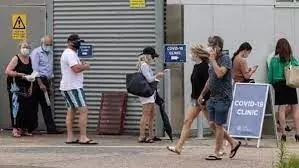
Two-thirds of Australians were infected by coronavirus: surveys
text_fieldsCanberra: Two-thirds of Australians including children and adolescents have been infected by Covid-19 since the pandemic began in early 2020. Experts said the result is expected because many children have either mild or no symptoms and are therefore not tested for the virus.
Two types of antibodies in the blood samples of children in the age group 0-19 were collected for the surveys. The first type is the antibody to the nucleocapsid protein of the virus suggests past infections. And the second type is the antibody to the spike protein which indicates past infection and/or vaccination.
According to the research, 79% of unvaccinated children aged from one to four have been infected with the virus. 67% of children aged from five to 11 also have a past infection even though many of them are vaccinated. Among the adolescents aged from 12 to 19, about 70% have been infected by the virus.
"Overall, this study tells us that at least two-thirds of children in Australia have had Covid-19. This is more than double the number of cases reported based on nose and throat swab testing for the virus," said Archana Koirala, infectious disease specialist.
Two surveys were carried out by the Paediatric Active Enhanced Diseases Surveillance (PAEDS) network and the National Center for Immunisation Research and Surveillance (NCIRS).
Another adult survey, jointly conducted by the Kirby Institute at the University of New South Wales (UNSW) and NCIRS also found that at least 65% of adults had antibodies indicating previous Covid-19 infection, a rise of about 20% compared to a previous serosurvey study three months earlier. It was based on 5,005 de-identified residual blood donation specimens received between August 23 and September 2 this year.
"These results provide further quantification of the size of the BA.4/5 Omicron wave during the winter months in Australia. Serosurveys continue to provide crucial information to support our efforts to understand the spread of SARS-CoV-2, and the impact of vaccination and infection on antibody levels in the community," said Professor John Kaldor from the Kirby Institute.























